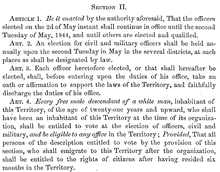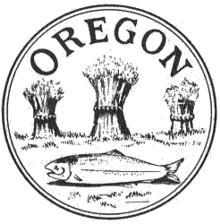
Champoeg is a former town in the U.S. state of Oregon. Now a ghost town, it was an important settlement in the Willamette Valley in the early 1840s. Located halfway between Oregon City and Salem, it was the site of the first provisional government of the Oregon Country.

Asa Lawrence Lovejoy was an American pioneer and politician in the region that would become the U.S. state of Oregon. He is best remembered as a founder of the city of Portland, Oregon. He was an attorney in Boston, Massachusetts before traveling by land to Oregon; he was a legislator in the Provisional Government of Oregon, mayor of Oregon City, and a general during the Cayuse War that followed the Whitman massacre in 1847. He was also a candidate for Provisional Governor in 1847, before the Oregon Territory was founded, but lost that election.

The Champoeg Meetings were the first attempts at formal governance by European-American and French Canadian pioneers in the Oregon Country on the Pacific Northwest coast of North America. Between 1841 and 1843, a series of public councils was held at Champoeg, a settlement on the French Prairie of the Willamette River valley in present-day Marion County, Oregon, and at surrounding settlements. The meetings were organized by newly arrived settlers as well as Protestant missionaries from the Methodist Mission and Catholic Jesuit priests from Canada.

Jesse Applegate was an American pioneer who led a large group of settlers along the Oregon Trail to the Oregon Country. He was an influential member of the early government of Oregon, and helped establish the Applegate Trail as an alternative route to the Oregon Trail.
Alanson Beers was an American pioneer and politician in the early days of the settlement of the Oregon Country. A blacksmith by trade, he was a reinforcement for the Methodist Mission in what would become the state of Oregon. The Connecticut native helped found the Oregon Institute and participated in the Champoeg Meetings where he was elected to serve on the Executive Committee in 1843.
William J. Bailey was a British-born physician who migrated to the United States, where he became a pioneer and politician in the Oregon Country, particularly the Willamette Valley. Bailey participated in the Champoeg Meetings that led to the creation of a provisional government in Oregon. He was selected as a member of that government, first on the executive committee and later in the Provisional Legislature of Oregon.

Doctor Ira Leonard Babcock was an American pioneer and doctor in the Oregon Country. A native of New York, he was selected as the first Supreme Judge with probate powers in February 1841 in what would become the state of Oregon.
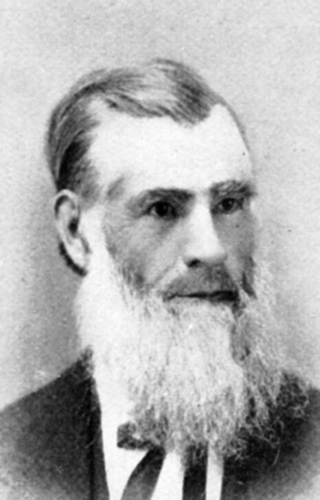
William Henry Gray (1810–1889) was a pioneer politician and historian of the Oregon Country in the present-day U.S. state of Oregon. He was an active participant in creating the Provisional Government of Oregon. Gray later wrote the book A History of Oregon, 1792-1849 and was instrumental in the establishment of the Oregon Pioneer Society.
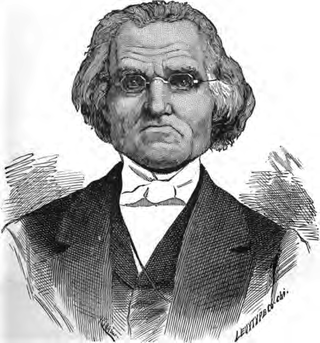
David Leslie was an American missionary and pioneer in what became the state of Oregon. A native of New Hampshire, he joined Jason Lee as a missionary at the Methodist Mission in the Oregon Country in 1836. In that region he participated in the early movement to start a government and his home was used for some of these meetings. With the closing of the mission he became a founder of the city of Salem, Oregon, and board member of the Oregon Institute, which later became Willamette University.

The Provisional Government of Oregon was a popularly elected settler government created in the Oregon Country, in the Pacific Northwest region of North America. Its formation had been advanced at the Champoeg Meetings since February 17, 1841, and it existed from May 2, 1843 until March 3, 1849, and provided a legal system and a common defense amongst the mostly American pioneers settling an area then inhabited by the many Indigenous Nations. Much of the region's geography and many of the Natives were not known by people of European descent until several exploratory tours were authorized at the turn of the 18th and 19th centuries. The Organic Laws of Oregon were adopted in 1843 with its preamble stating that settlers only agreed to the laws "until such time as the United States of America extend their jurisdiction over us". According to a message from the government in 1844, the rising settler population was beginning to flourish among the "savages", who were "the chief obstruction to the entrance of civilization" in a land of "ignorance and idolatry".
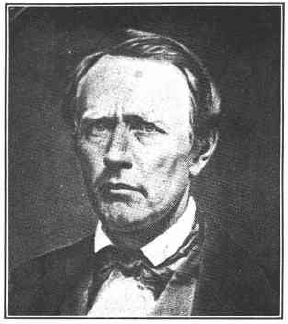
William Holden Willson was a pioneer of the U.S. state of Oregon and the founder of its capital city, Salem. A native of New Hampshire, he immigrated to the Oregon Country in 1837 to work at the Methodist Mission, and there would participate in the Champoeg Meetings. Willson served as the first treasurer of the Provisional Government of Oregon.

The Provisional Legislature of Oregon was the single-chamber legislative body of the Provisional Government of Oregon. It served the Oregon Country of the Pacific Northwest of North America from 1843 until early 1849 at a time when no country had sovereignty over the region. This democratically elected legislature became the Oregon Territorial Legislature when the territorial authorities arrived after the creation of the Oregon Territory by the United States in 1848. The body was first termed the Legislative Committee and later renamed the House of Representatives. Over the course of its six-year history the legislature passed laws, including taxation and liquor regulation, and created an army to deal with conflicts with Native Americans.

Robert "Doc" Newell, was an American politician and fur trapper in the Oregon Country. He was a frontier doctor in what would become the U.S. state of Oregon. A native of Ohio, he served in the Provisional Government of Oregon and later was a member of the Oregon State Legislature. The Newell House Museum, his reconstructed former home on the French Prairie in Champoeg, is listed on the National Register of Historic Places.
Albert E. "A.E." Wilson was an American pioneer and merchant in Oregon Country. Raised in the United States, he moved to what would become the U.S. state of Oregon where he operated stores, was involved in politics, and was elected as the first judge of the Provisional Government of Oregon.

Harvey L. Clarke was an educator, missionary, and settler first on the North Tualatin Plains which would become Glencoe, Oregon and then on the West Tualatin Plains that would become Forest Grove, Oregon. A native of Vermont, he moved to the Oregon Country in 1840 where he participated at the Champoeg Meetings, May 2, 1843, and helped to found Tualatin Academy that later became Pacific University. Clarke also worked for the Methodist Mission and was a chaplain for the Provisional Legislature of Oregon in 1845.
James A. O’Neil was an American businessman and politician in the Oregon Country and later Oregon Territory. A New York native, he took part in the Champoeg Meetings and helped form the Provisional Government of Oregon. Prior to the formation of a government he participated in the Willamette Cattle Company, and later served as a judge in the Provisional Government.
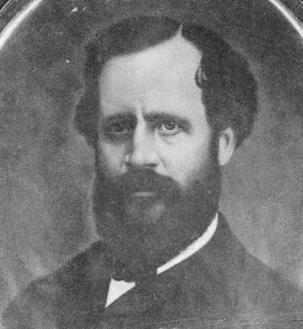
Medorem Crawford was an American soldier and politician in what became the state of Oregon. A native of the state of New York, he emigrated to the Oregon Country in 1842 where he participated in the Champoeg Meetings and served in the resulting Provisional Government of Oregon as a legislator. A Republican, he later served in the Oregon House of Representatives after statehood and was appointed to several federal government offices. During the American Civil War he escorted emigrants over the Oregon Trail.

Alvin Thompson Smith was an American missionary and politician in what became the state of Oregon. A native of Connecticut, he lived in Illinois before moving to the Oregon Country to preach to the Native Americans in the Tualatin Valley. There he served in both the Provisional Government of Oregon and the government of the Oregon Territory, as well as helping to establish Tualatin Academy, later becoming Pacific University. Smith’s former home, the Alvin T. Smith House in Forest Grove, is listed on the National Register of Historic Places.

Thomas Dove Keizur was one of the earliest American pioneers to settle in the Oregon Country. In 1843, he led his large family from Missouri to Oregon over the Oregon Trail. He homesteaded in Oregon's Willamette Valley in an area north of modern-day Salem, Oregon. Keizur was one of eight citizens elected to serve on Oregon's third pre-provisional legislative committee which helped lay the foundation for the establishment of the Oregon Territory. He was also the first captain of the Oregon Rangers, the first militia unit organized in Oregon. Today, the city of Keizer, Oregon, is named in his honor.
